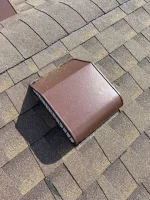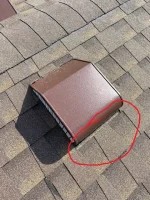Just had my roof redone and used a reputable local company here in Central FL. My issue is with the roof vents, I'm questioning the install as well as the use of the box type vents vs the ridge vent that was on our house. From what I can tell there is supposed to be a visible flashing part of the vent on the down slope side so that water doesn't get in under the shingles. My vents are not installed like this and have shingles all around creating what I'd see as a potential water intrusion under the shingle in heavy rain eventually causing a major issue. Here is a pic of the exact vents we have but this shows the flashing exposed on the down slope and not under the shingles. Mine are installed with none of this flashing visible (can go up on the roof and get a pic if it helps)
Am I worrying about nothing?
Am I worrying about nothing?



